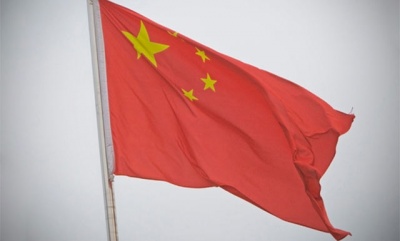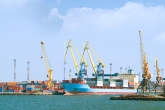Increased China 0.5 per cent contamination limit a ‘very challenging target’
The Chinese government has notified the World Trade Organisation (WTO) that it will be introducing a 0.5 per cent contamination limit on imports of waste materials, higher than the original 0.3 per cent proposed in August, but some way below the current 1.5 per cent limit.
 The 0.5 per cent limit, announced last week, will apply to waste materials including paper and cardboard, plastics and others while a one per cent limit will be allowed for non-ferrous metals.
The 0.5 per cent limit, announced last week, will apply to waste materials including paper and cardboard, plastics and others while a one per cent limit will be allowed for non-ferrous metals.
The new limit will also not apply to mixed papers or post-industrial or post-consumer plastics as these materials have been banned for import in China.
The new limit will be adopted on 31 December 2017, but will not enter into force until 1 March 2018. China has announced it will also be reducing the number of waste import licences allowed in 2018.
In addition to increased contamination allowances, the WTO is believed to have requested a transition period of five years, and the Recycling Association, which represents many exporters of waste from the UK, says it will push for the Chinese Government to give more certainty to the worldwide recycling industry by taking on board this request.
Commenting on adjusted contamination limit, Recycling Association President Adrian Jackson said: "While we welcome the flexibility shown by the Chinese Government in raising the out-throw limit to 0.5 per cent from the original 0.3 per cent that was proposed, this is still a very, very challenging target. We would have liked to have seen paper and cardboard given at least the same out-throw target as non-ferrous metals that are allowed 1 per cent contamination.
"We should be under no illusion that a 0.5 per cent contamination level will be extremely tough to meet, especially with only until 1 March 2018 to hit that requirement. From now, every part of the supply chain has to focus on quality first, so that we can continue to send secondary materials to our biggest purchaser.
"However, with plastics now banned, apart from a very small amount of post-production material, this should serve as a warning that unless we produce a quality product from other materials, we could risk losing the Chinese market altogether.”

The announcement sent shockwaves through the UK recycling industry, which currently sends about 494,000 tonnes of plastics and 1.4 million tonnes of recovered paper to China annually, having only just come to terms with the National Sword crackdown on foreign waste imports in February.
The UK recycling sector and waste exporters has looked to the government for support and action on the matter, with the Resource Association, the Recycling Association, the Confederation of Paper Industries (CPI) and the Environmental Services Association (ESA) writing to Resources Minister Therese Coffey urging “urgent action” to support the recycling industry.
However, hopes that such support is forthcoming may be misplaced after Environment Secretary Michael Gove admitted before the Environmental Audit Committee (EAC) that he had “not given sufficient thought” to the possible impacts of China’s crackdown on waste imports. 









